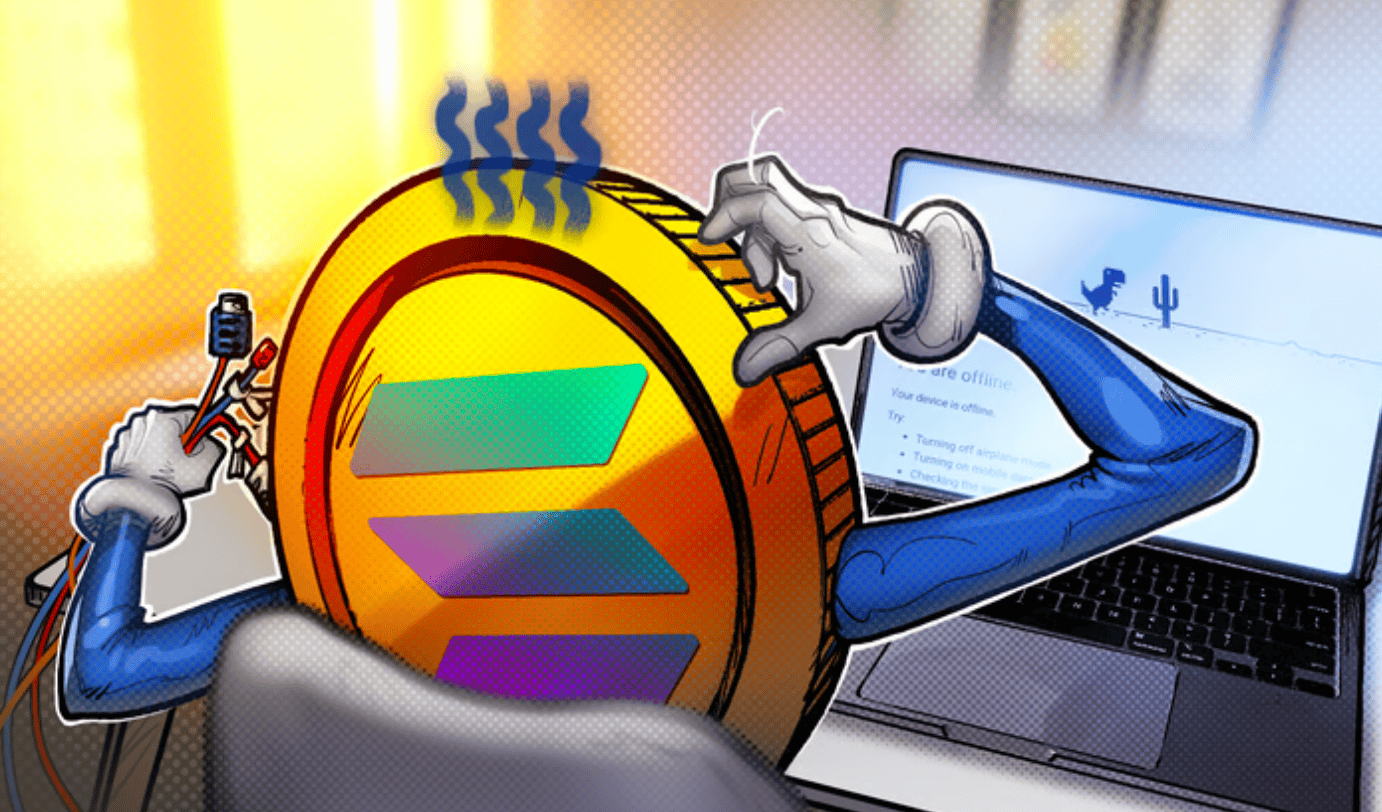
Like many so-called “Ethereum killers,” the Solana blockchain has yet to deliver on its promises in any meaningful way.
Despite being theoretically fast and scalable, the network has a history of repeated network outages that are never fully resolved. It does not perform adequately under full network capacity. It’s supposed to process 50,000 transactions per second (TPS), but peaks around 1,000 TPS under real-world conditions — with 30-60 second waiting times.
While impressive by blockchain standards, it’s nowhere near the commonly advertised speed, and it’s irrelevant in the context of never-ending network congestion.
Solana’s congestion difficulties
As of April, 75% of all non-vote SOL transactions were failing, mainly due to the demand for meme coins on the network. Users took to X complaining about the degraded user experience. The high transaction failure rate was largely attributed to a surge in bot activity — which is not exactly a ringing endorsement for the network.
Solana’s history of frequent network failures dwarfs that of other major chains. It suffered from a five-hour outage on Feb. 6, two months before its April failure. In January 2022, it experience a whopping 58-hour outage. The network has suffered nine network outages since 2021 alone, spanning more than 150 hours of downtime.

Solana’s official uptime reporting — visible on its homepage — is also questionable, indicating 100% uptime in months where exchanges (such as Coinbase) and users reported severe network outages. Network congestion is what the chain is most known for. That’s significant, on a blockchain whose main selling point is throughput and scalability.
It’s just a phase — isn’t it?
The common narrative from Solana bulls is that congestion is a natural consequence of success. Ethereum dealt with similar concerns around congestion, while Bitcoin had to increase its block size. Thus, according to the narrative, Solana will go on to become the most successful blockchain because the fastest, cheapest chain will win the day.

Yet, Solana’s problems go much deeper and can’t be waved away so easily. Consistent network outages and an inability to handle high traffic, as well as meme activity, is a failure by any metric. The core product has essentially been rendered unusable.
Related: Exclusive: Mike Flood is shaking Congress up over cryptocurrency
Uptime performance is the prime consideration in determining the reliability of any network. There is simply no way to describe a blockchain with consistent, hour-long outages as “high-performance.”
Solana’s unacceptable uptime performance
Solana is a low-cost chain and this is by far its major USP. It offers the lowest fees of any major chain. This is what has attracted so many bots and users, which overwhelm the network. It also recovered extremely well from its close ties to the FTX scandal, which many predicted would doom the ecosystem entirely.

It will continue to be popular among retail investors, particularly as long as meme coins are in vogue. It’s the easiest and cheapest way to launch a meme project, which will, in turn, attract many users aiming to 100x, as well as bots. But for Solana to be taken seriously, it needs to survive for a prolonged period without severe network outages. That’s a generous baseline for network stability.
In 2018, Visa’s networks went down for 10 hours. It was a big deal — rightly so — that resulted in aggressive media coverage. Visa compensated cardholders and issued a formal apology. has not experienced any failures since that time — and it has accommodated far more traffic than Solana. That’s the kind of stability required to earn real-world utility.
It’s not even that complicated or controversial. An outage is the worst thing that can happen to any network. It’s strange to see such errors passed off as teething difficulties by the community. Imagine if Visa crashed nearly a dozen times over four years — going offline for more than 150 hours — but claimed it was a positive phenomenon that “strengthened the network.”
I’ll be Solana’s biggest fan when it starts delivering on its promises — instead of spinning them away.
